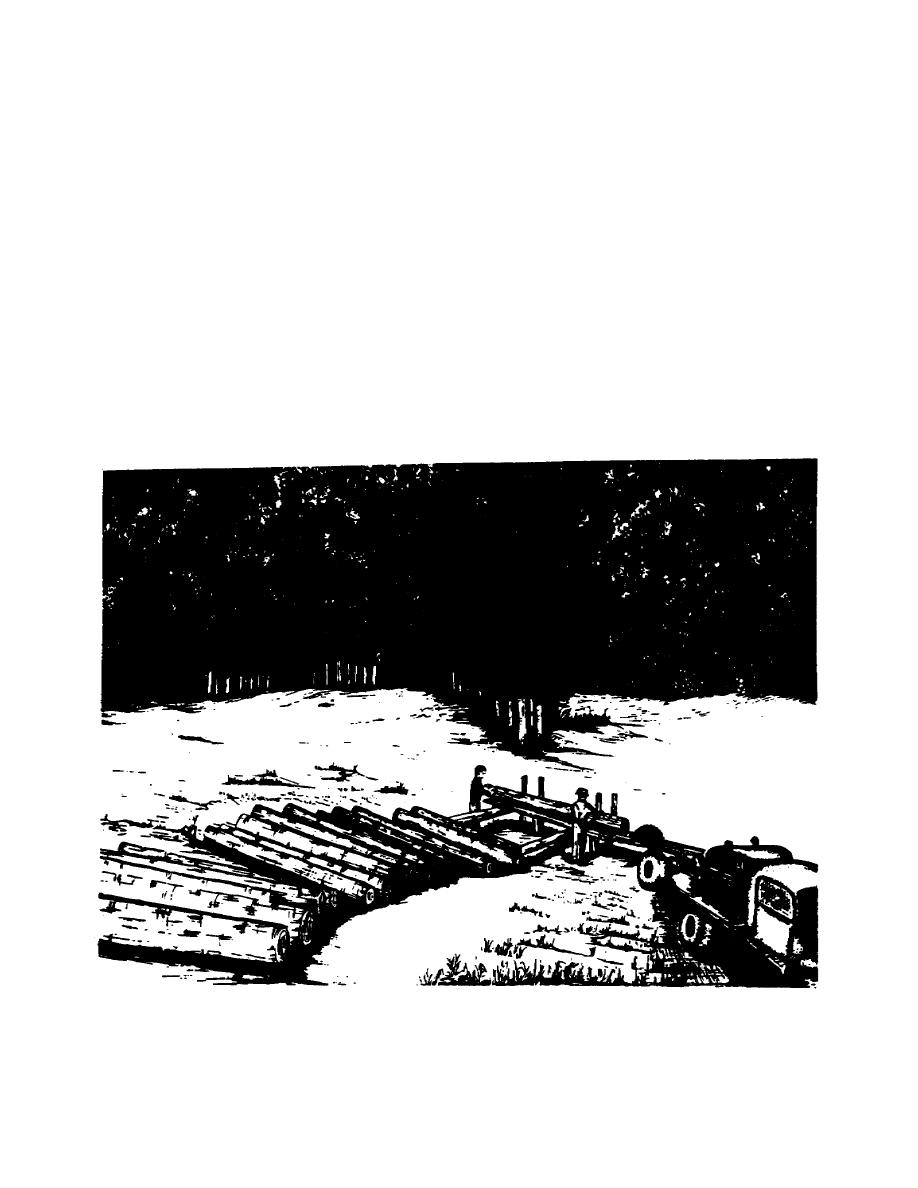
saw. On the forward movement, the log directed into
have a tendency to tip the carriage up. Also, the saw is
the saw to cut the board from the side of the log.
now apt to run "out", that is, to follow the grain of the
11-3. As the log is being brought up in readiness to be
wood.
placed on the carriage, you must consider the presence of
11-7. After the log is received on the carriage, it must
extending knots or other obstructions that could prevent
be dogged. "Dogging" is the term given to the act of
the log from lying firmly on the carriage or obstruct it
securing the log on the carriage by hooking the dogs into
pas age as the carriage is brought forward.
the log This very important, because improperly dogged
11-4. You must also consider any bends in the log.
logs or cant my result in accidents and usually result in
The tendency for a new operator is to place the bow or
damage to the saw, which in turn means lose of time and
"belly" of the log up or down. In fact, many old sawyers
manpower.
want the bow up and slightly out. It has been found by
11-8. The following hand tools are considered
careful check as to the quality of lumber produced, that
essential to the operation of a portable sawmill unit:
this procedure b definitely wrong. The correct position is
a.
with the bow of the log on a horizontal plane toward the
Axe
b.
operator's side to the carriage, and the log resting on all
Shovel
c.
the head blocks over which it extends.
Oil can
d.
11-5. In this position, the log can easily be brought out
Cant hook
e.
on either end by use of a wedge or pried out with a cant
Spirit level
f.
hook so that the line of cut will be equal on each end.
8-inch half-round Ale
g.
11-6. Logs should be received on the carriage with the
Saw Ale
h.
butt-ends (large ends) toward the saw, especially long
8-inch adjustable jaw wrench
logs, because the heavy butt on the overhanging end will
Figure 50. Skidway.
36



 Previous Page
Previous Page
